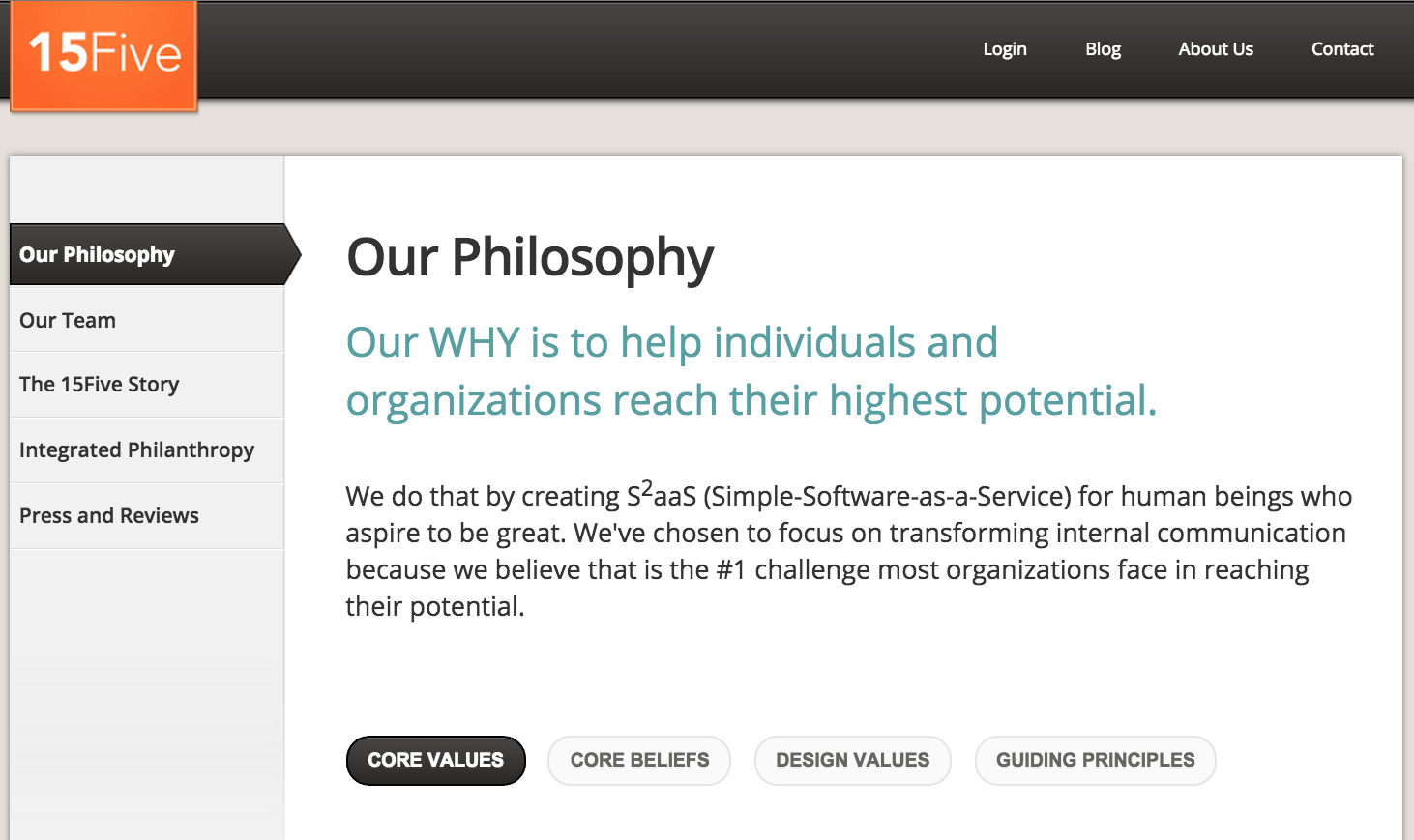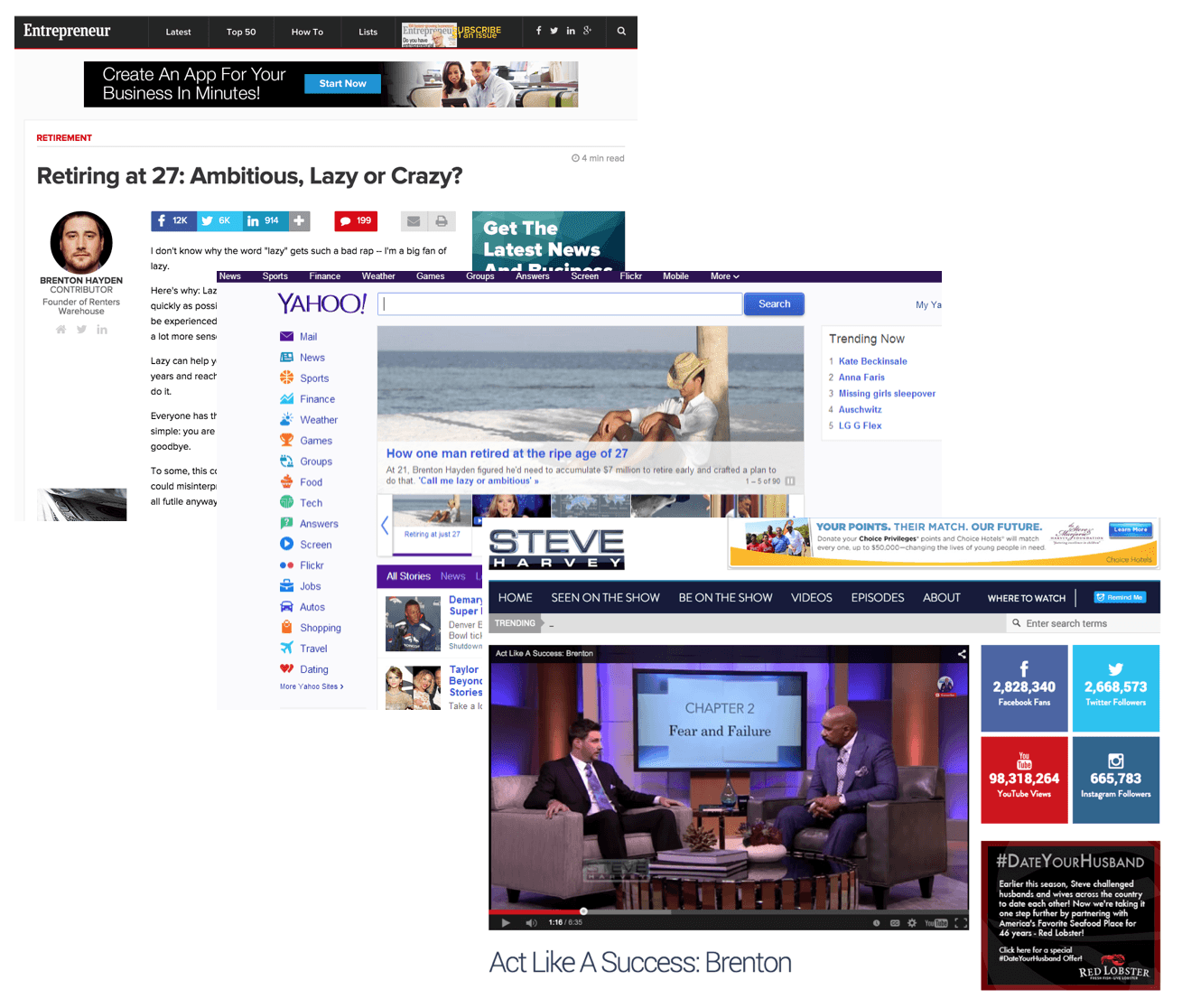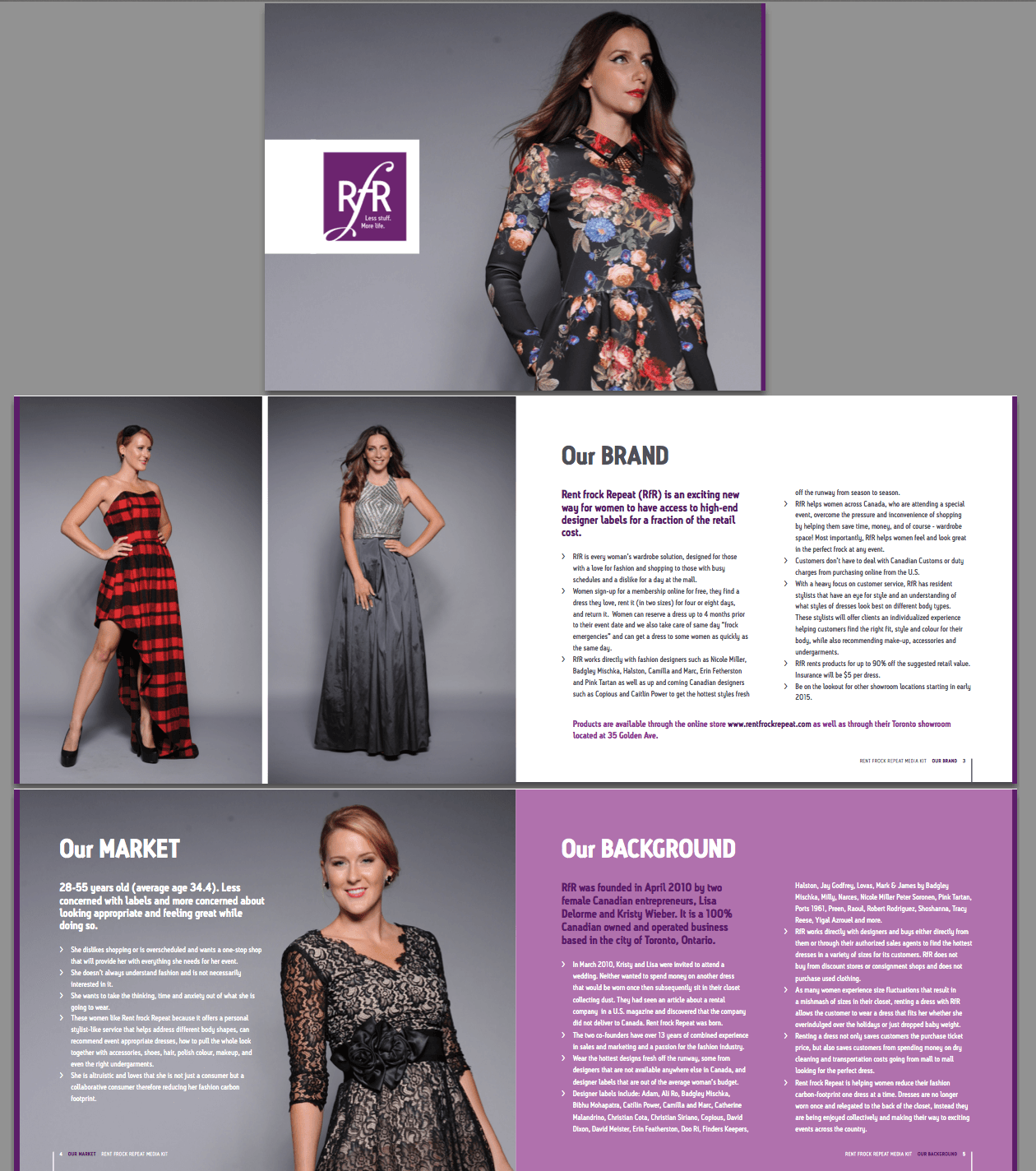The 5-Step Approach to Getting Press and Media Coverage
Whether you’re looking to raise your public profile, or hoping to get the word out about a new product, media coverage is one of the best ways to get your company noticed.
Unfortunately though, obtaining press coverage isn’t a simple matter of firing off pitches and hoping for the best. Like all good things, successful media publicity is the result of hard work, and careful planning.
Journalists now outnumber PR professionals five to one. In order to stand out in today’s information-saturated world, you’re going to need a plan – one that will help you land the coverage you need. Here are five steps that will help you develop a strategy to get your company into the news.
Step 1: Start With Your Story
15Five has a compelling story and strong core values that run through the organization and it’s customer base. They openly share their philosophy as a way to understand their purpose and the problem they solve. http://www.15five.com/about/
What’s the secret to landing press coverage? Doing something that will get the media’s attention. Big-ticket stars use this tactic all the time. From celebrities to startups selling widgets, the idea is the same: the media want something that will get their reader’s attention. Give it to them, and your chances of coverage will soar.
Forty-four percent of journalists get pitched a minimum of twenty times per day. The best way for your startup to get into the press is by having an amazing company story, one that will help you to stand out from the crowd.
Your story is your chance to present your news in a way that’s irresistible to the press. It’s your raison d’être, your reason for existence.
Develop your personal story alongside your startup story. This will help to give your company a face, and add a level of human interest, very important for making it into the news. Go beyond the traditional “why I started this business…” Instead, be compelling. Show the world why your company needs to exist. Mention what problem you’re solving, or what you’re doing to change the world.
By developing a strong and compelling story, you’ll be off to a great start. Your story will lay the groundwork for facilitating media coverage. So spend some time on this and make sure your story’s a good one.
Step 2: Establish Goals – Reasonable Ones
Create a checklist of tasks you need to accomplish weekly, monthly, quarterly, and annually.
Next, you’re going to want to focus on setting clear, reasonable goals.
It’s important to focus on smart goals, not merely vanity metrics. Set your objectives carefully, with the big picture in mind. Instead of, “become famous,” be specific. Set goals that will help you to reach your higher objectives: “Increase brand awareness by targeting well-known publications,” or “Alert potential customers to a new product by seeking coverage in niche publications that our target market frequents.”
Having clearly defined objectives will help you to know at a glance if you’re on-track, and will show you when you need to adjust your strategy. Use a spreadsheet to categorize everything, and build a tactical media list. Choose journalists and publications that you would like to have cover your company, and opt for outlets that will help you to reach your publicity goals.
Less is always more. You’re busy and don’t have endless hours to pour into media outreach, so make your efforts count. At this point, it’s not so much a numbers game as it is about the quality of your strategy. Two or three solid connections will far outweigh one foot in the door at dozens of publications.
Step 3: Build Rapport With Journalists BEFORE You Need Them
Short and straightforward questions to writers and journalists are best. Before sending this email, Crystal made sure that the writer covered this type of content first and that she was offering her help, as opposed to giving her more work.
Would you walk up to a complete stranger and ask for a favor? Most of us cringe at the thought. But what about asking a friend for a favor? Less pressure, right?
When pitching to the press, it’s the same thing. By pitching to journalists, you’re essentially asking them for a favor – to cover your company. But without establishing a rapport ahead of time, you’re just asking strangers for favors.
Journalists are people too. Before you start pitching to them, it’s important to engage with them ahead of time. In fact, sixty-four percent of writers think that it’s important to establish a personal connection before pitching. Ideally, you should start connecting with them long before you need them, and at the very least, two months before you pitch.
Successful media outreach is all about relationships. Your best chance of coverage will hinge directly upon your relationship with the writers in question. Since you know them, it will help you to pitch news that they’re actually interested in. And since they know you, they’ll be more inclined to read your pitch.
Start Connecting With Journalists:
- Follow Them on Twitter – Most journalists can be found on Twitter; almost 60 percent have a Twitter account. So follow them, and engage in conversations about day-to-day life, a TV show they’re live tweeting, a sports event, or their daily coffee shop visit.
- Connect With Them or In-Mail Them on LinkedIn – Some writers prefer LinkedIn. If the writers you’re targeting are on there and the timing seems right, pick their brain about how they prefer to be pitched. Ask them what type of stories they look for and how much notice they prefer to have when covering your news or announcement.
- Connect Locally – If a journalist is local, it’s important to connect in-person. On a local level, attend events, conferences, or trade shows to get some face time.
- Make Their Life Easier – A great way to connect with journalists is by making their life easier. Help them with a piece they are working on, one that’s unrelated to your company, by referring them to a business or product that you know of. HARO (Help a Reporter Out) is an excellent resource.
One major win we recently secured was due to diligence in pursuing connections before pitching. Our Director of PR found a female reporter who fit our client’s demographic, and started following her on Twitter. She began engaging with her over things they had in common for several months. Only after establishing a connection did she pitch her. The reporter gave us an email that put us in touch with the right producer, and four months later our client secured an incredible interview that sent their website traffic skyrocketing!
Never underestimate the importance of connections. Take the time to connect with journalists on Twitter, LinkedIn, Facebook, or in-person. Introduce yourself, and establish a connection. You’ll have much better results that cold pitching.
Step 4: Build the Perfect Pitch
If you take the time to research the right outlet, journalist, and equivalently spend time on crafting the right pitch, you can turn one media mention into longtail exposure for yourself. Brenton Hayden (Renters Warehouse founder), contributed content to Entrepreneur.com, which got syndicated to Yahoo Finance and thus led him to numerous interviews and even a spot on the Steve Harvey show.
Most startups view every achievement as exciting – because, truthfully – they are! But as easy as it is to be thrilled with your own news, it’s important to look at it from the media’s perspective. Ask yourself if the story will be just as exciting to them.
Look at your news from a 1000-foot perspective, and try to imagine a headline that your customer would want to read. This will help you to craft a pitch that will be more likely to capture the writer’s attention.
This is where the relationships that you’ve been building with the press will come into play. Before you pitch, it’s important to ask permission, or to learn how the journalist prefers to accept pitches.
Ideally, you won’t even have to pitch at all. You will have built rapport over time, and from there you’ll have a good idea about what type of stories they cover. You’ll be able to ask if you can share some news that you believe they’ll be interested in. If you’ve done your homework right, you’ll be met with open ears.
If your news doesn’t have a built-in story – create one. Coordinate an influencer campaign to generate excitement, and use that momentum to justify a press mention. Or adjust the angle of the pitch so it will be appealing to the journalist in question. For example, if the writer typically covers business success stories, be sure to highlight this aspect of your story in your pitch.
Step 5: Close the Deal
Create beautiful and detailed assets for the media. Be prepared to provide the information they request. Time is of the essence, so anticipate their questions and stockpile your answers and assets accordingly.
No one wants to be thought of as pushy – visions of the clichéd used car salesman spring to mind. When closing the deal with writers, don’t be aggressive. Your goal isn’t to pressure a writer into covering you; you’re just confirming interest.
Follow up only after two or three days. Even if you’re in a time crunch, it’s important to wait at least 24 hours.
When a writer responds with a “not interested,” don’t be discouraged: it happens. Instead, try to use no’s as an opportunity to learn what you can do differently next time. Maybe the timing was wrong, or the story was a poor fit for the publication. Whatever it is, be sure to respond to the writer, thanking them for their consideration, and if the timing’s right – consider asking if you could pitch to them again in the future. Always treat a no like a future yes.
When a writer does respond positively to your pitch, make sure you’re available to give them everything they need to tell your story. If you’re launching, make sure your website is ready. If they ask for an interview, make yourself available for one. Have your press assets on hand: founder bios, photos or videos of the products in action, and your company story or media release. A few great pieces can be extremely impactful, so focus on quality over quantity.
It can be easy to come across as rude, even without meaning to be. So stand by your promises and keep to deadlines. If you promise someone an embargo, give it to him or her. Don’t change your mind. Be mindful of the fact that you’re building your reputation. If you make life easier for the journalists, chances are they’ll be receptive the next time you approach them with a story.
Successful coverage isn’t landing a one-time feature; it’s about finding a way to facilitate continual coverage for your company. This is where all of those relationships that you’ve been building with the press will come full circle. Since they’ve featured you once, they’ll be more likely to cover you again in the future.
Keep up with journalists who feature you. Follow them on social media, comment on their articles, and share leads that you think they’ll find interesting. Work hard to maintain the relationships that you’ve established. You never know when you might have more news to share.
Source: Renée Warren, Kismetrics.com
About the Author:
Renée Warren is the CEO and Co-founder of Onboardly, a demand marketing agency that helps startups fast-track visibility, brand awareness and lead generation. We work at the intersection where public relations, content marketing, and social media meet, to deliver marketing that gets results. Follow her @renee_warren on Twitter, LinkedIn and her blog.










